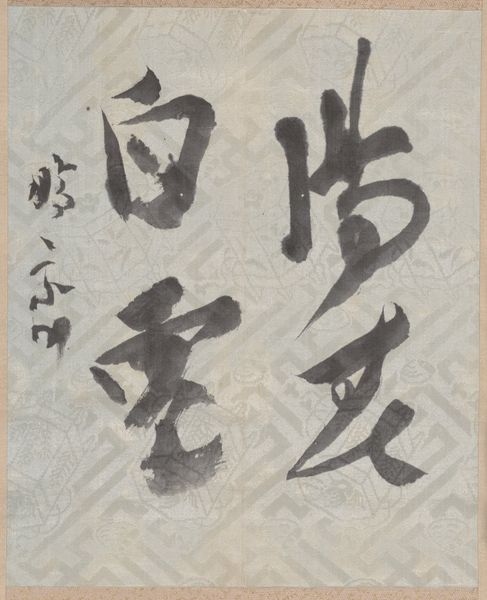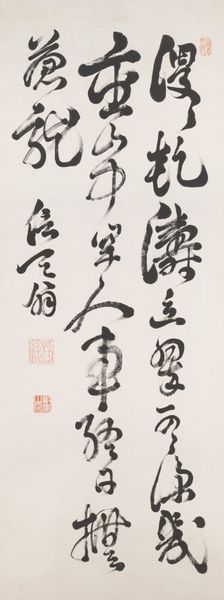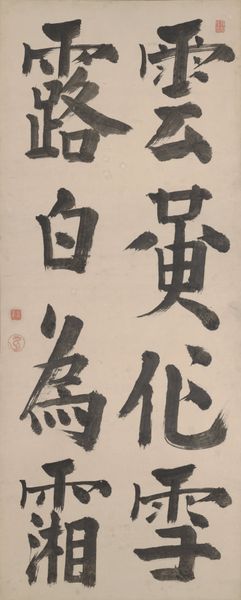
paper, ink
#
non-objective-art
#
ink paper printed
#
asian-art
#
paper
#
ink
#
abstraction
#
line
#
watercolour illustration
#
calligraphy
Dimensions: height 133.7 cm, width 34.1 cm
Copyright: Rijks Museum: Open Domain
Curator: Looking at this Japanese Zen calligraphy, the ink's almost vibrating against the stark paper. Editor: Well, that's one way to put it. I see a raw, direct process. I can almost feel the artist's hand moving with urgency. It feels connected to the everyday making, from the grinding of the inkstone to the specific texture of the paper chosen. Curator: Indeed. The work is titled "Zen Calligraphy", made sometime between 1933 and 2002 by Nakano Eiken. Consider the formal arrangement; the deliberate placement of these abstract elements – the vertical stroke bisecting the composition and those dynamic characters above and below. There is no attempt to mimic reality; this transcends mere representation. Editor: For me, it highlights the inherent link between process, materiality, and the cultural understanding of Zen Buddhism, really blurring the boundaries between meditative act and finished object. The variations in ink density hint at different pressures applied, moments of deliberation, and possibly, improvisation. Curator: Precisely. Notice how the strokes begin and end with visible intent. We are not witnessing casual marks but conscious decisions inscribed with the most economical deployment of ink and void. Observe, too, the calculated disjunction between the characters; how negative space generates visual rhythm and emphasis. Editor: And this makes me wonder about the labor that went into sourcing these materials: where the ink came from, how the paper was made, perhaps even who made it, or what the maker's daily work life was like. Each element tells a story about the human context behind it. Curator: Ultimately, the artwork embodies that sublime paradox that resides at the heart of Zen thought – immanence and transcendence. We glimpse, as in a mirror, an unmediated representation of something so fundamental it evades direct description. Editor: Yes, and through an acute understanding of materials, their sources, and how the artwork embodies daily labour, we come to appreciate both the philosophical concept and the reality in which that object was made. Curator: Thank you for helping clarify our own perceptions and allowing us to consider Nakano Eiken's work on these alternative and compelling terms. Editor: And thank you for pushing beyond material aspects toward larger cultural importance of form in art making.
Comments
No comments
Be the first to comment and join the conversation on the ultimate creative platform.













